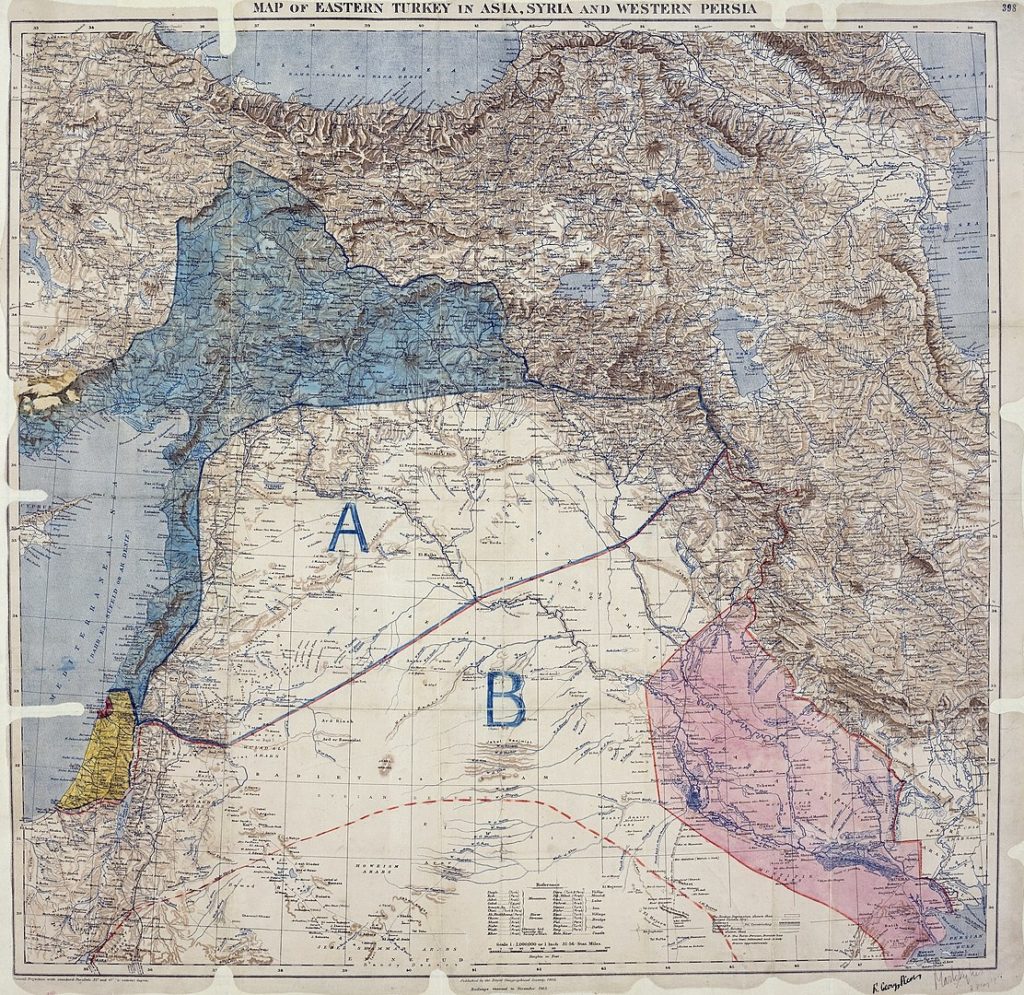
So I’m gonna be a little controversial today and open this episode with a clip from an unexpected source: ISIS. As in, the Islamic State. Listen, I’m not in the habit of quoting terrorist groups. But as random as it sounds, ISIS has some opinions on the topic we’re talking about today: the Sykes-Picot Agreement of 1916. And yes, it might be kinda weird to listen to a bunch of soundbites about a crusty old agreement from WWI if you’re not quite sure what said agreement is all about. But bear with me, because I promise I’m going to explain.
In 2014, Abu Bakr al-Baghdadi, the leader of ISIS, released a propaganda video, in which he promised that the Islamic State’s “expansion will not stop until we hit the last nail in the coffin of Sykes-Picot.” Here’s one of his spokesmen expanding on that macabre metaphor.
Okay, yeah, there are a lot of things that ISIS doesn’t like. Like, you know, religious tolerance, women, democracy… But weirdly, they’re actually not alone in disliking Sykes-Picot. Turns out a lot of smart, decent folks also have some things to say about the 1916 agreement that reshaped the modern Middle East.
Here’s Emily Hawthorne, a Middle East analyst for the geopolitical intelligence agency Stratfor discussing the treaty.
And here’s Hayder al-Khoei, a visiting fellow at the European Council on Foreign Relations, talking about it.
So… what is Sykes-Picot? Why do so many people from across the political spectrum hate it so much? And why do I, Noam Weissman, think that everyone from ISIS to foreign policy analysts is overrating this just a bit?
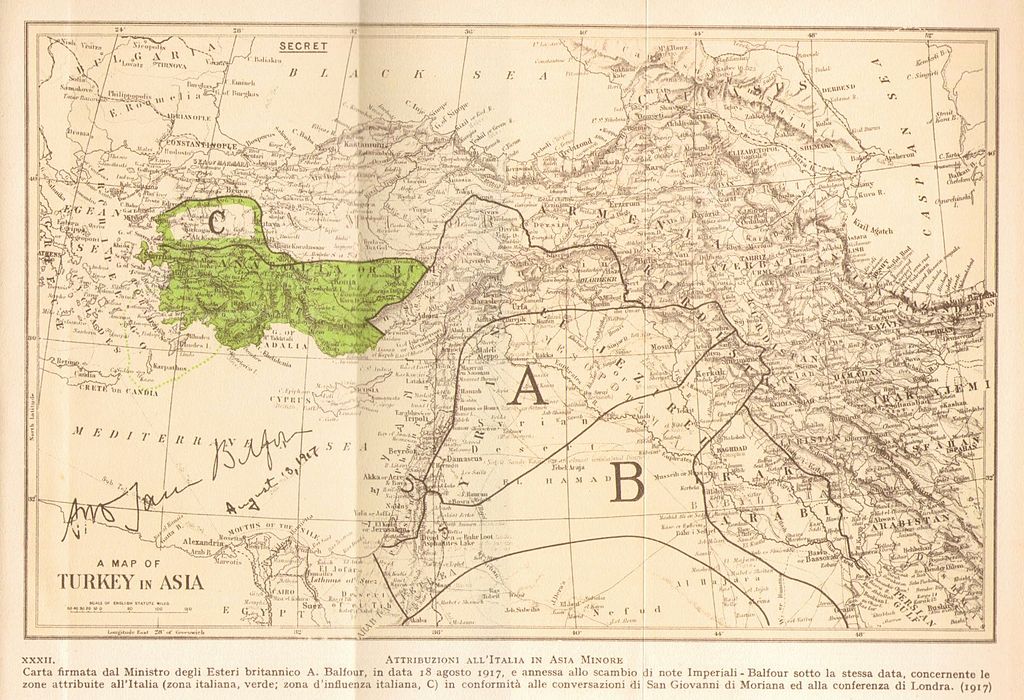
Yeah, I said it. I’m taking the brave stance of saying that ISIS IS WRONG! Who said I don’t take stances on things?
But seriously. Why am I breaking with the time-honored tradition of dunking on Sykes-Picot? Why do I take the somewhat iconoclastic view that as a historical artifact, the Sykes-Picot treaty is… kinda overrated?
Why do I think that the most important moment for the modern Middle East is actually something else altogether, a conference called San Remo that almost no one has ever heard of? (Seriously, have you heard of it? Cause I didn’t til I was in college.)
To explain my iconoclastic tendencies, we gotta go back in time. And – in what’s becoming a theme for this episode – we’re gonna open with another terrorist group, this one with a much more foreboding name than the Islamic State. We’re gonna talk about… The Black Hand.
The Black Hand

Every disaffected political group needs a grievance, and the Black Hand’s was this: they really wanted to wrench a greater Slavic state from the Austro-Hungarian Empire. (And yes, I promise this is relevant to Israeli history.)
You know the saying that if you want an omelet, you gotta be okay with breaking a few eggs? (Shout out to Benny Morris for coining that helpful idiom!) Well, the Black Hand smashed the whole carton and then some when they sent 20-year-old assassin Gavrilo Princip to kill Archduke Franz Ferdinand, heir to the Austro-Hungarian throne. I don’t think they intended to kick off WWI, upend the world order, and redraw borders across Europe, Asia, and Africa, but, you know. That’s history for you!
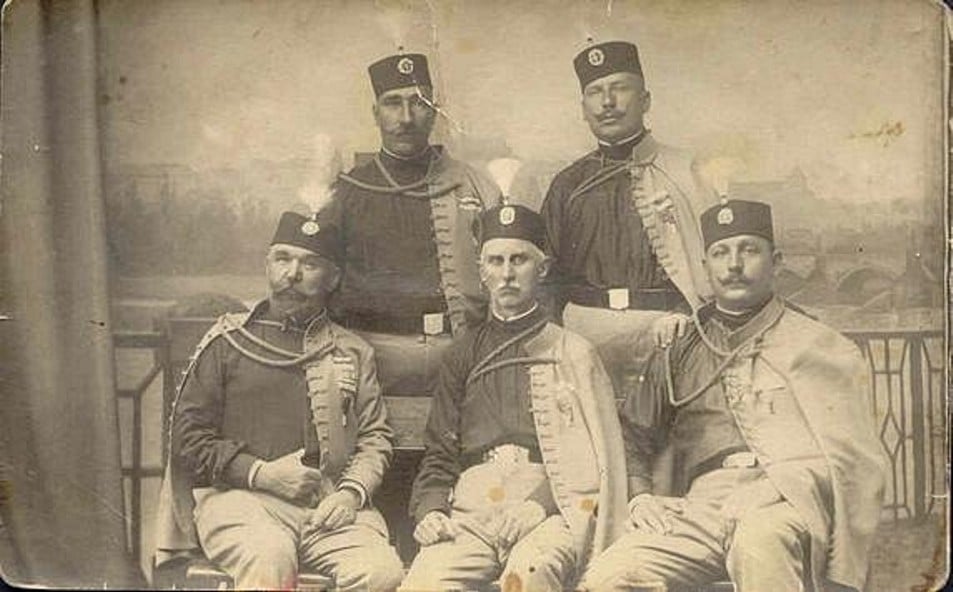
OK, so it’s 1916. The Great War, or WWI as its now known, is raging, and all the key players are duking it out for control of resources, land, and power. The Ottoman Empire, mockingly known as the “the sick man of Europe,” is on its deathbed. Which means that its territory in the Middle East, which comprised modern-day Turkey, Syria, Lebanon, Israel, Iraq, and parts of Saudi Arabia, is up for grabs. And everyone wants a piece of the pie.
Here are your major players:
- Number one: the Ottomans themselves, who have already lost the bulk of their European territory and really want to maintain their control over the Middle East. And just so we’re clear: Ottomans are not Arabs. European sources generally refer to them as “Turks,” which is only kinda-true, but that’s material for a whole other podcast.
- Number two, we have the Arabs, represented by Hussein ibn Ali, the emir of Mecca. The Ottomans had given him control of Mecca – you know, the holiest site in Islam, located in modern-day Saudi Arabia. This was a pretty powerful position, and Hussein kinda let it go to his head. In 1916, he declared himself king of all the Arabs – a title that no one actually recognized (though the Allies did consider him the king of a portion of western Saudi Arabia, called the Hejaz). It was on that authority that Hussein opened negotiations with the British High Commissioner of Egypt in 1915, asking that the British set aside some land for an Arab state. In return, Hussein would lead an Arab revolt against the Ottomans. Now, the two men never came to an agreement about specific territory. But Hussein held up his end of the bargain, launching the Arab revolt against the Ottomans in 1916. So the correspondence between the Arabs and the Brits was certainly sufficient to further complicate an already complex situation.
- Which brings us to Player Number Three: the British! Because when there’s territory to be had, you know the British are showing up to the party. They already control Egypt and parts of the Arabian Gulf. And since they’re the biggest, strongest empire in the Middle East right now, they’re about to get grabby with Ottoman land.
- Number four: to round out our colonial empires, we’ve got the French. They’re allied with the British against the Central Powers, so the two empires are looking out for each other. Which means that they’re ready to split Ottoman territory with each other and the rest of their colonial friends, like Russia. Screw everyone else!
- And finally, we’ve got the Zionists – you know, the Jewish people seeking national liberation. Not at all as powerful as the empires, not as numerous as the Arabs. But they’ve got one thing going for them: they’re persistent. The Zionist Organization is working overtime to guarantee that the most powerful player in the arena – Britain – recognize Jewish statehood in Palestine. And they’re about to get their wish… sort of.
So those are your key players. Now, I remind you that it’s 1916. The Ottoman Empire may be the sick man, but it ain’t dead yet. So Britain and France had a lot of chutzpah to do what they did next. They called a secret conference – just the two of them – to determine who gets all the sick man’s stuff. And by stuff, I mean territory.
A secret conference
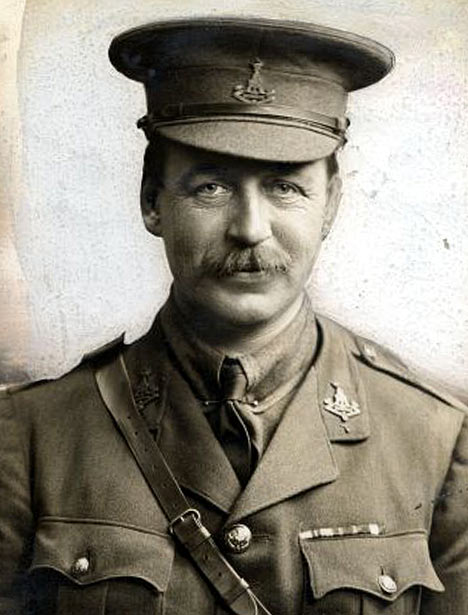
On the British side was Sir Mark Sykes, whose long career as a diplomat had thus far been disappointing. At the British embassy in Constantinople, he was basically a glorified intern – seriously, his role entailed compiling press clippings into an album. But the outbreak of WWI brought along a new post in the British War Office. Sykes spent the first two years of the war kicking around the Middle East on secret recon missions. His boss – Lord Herbert Kitchener, the secretary of state for war – was so impressed with his work that he sent him off to decide what to do with the remains of the Ottoman Empire. Pretty big upgrade for a guy whose former job consisted of copying and pasting.

Sykes’ French counterpart was diplomat François Marie Denis Georges-Picot (we’re just gonna call him Picot). He had served as the French Consul-General Beirut for only eight months when WWI broke out – just enough time to ingratiate himself with Lebanon’s Christian community. Of course, he did not consult this community – or any local community – as he and Sykes redrew the Middle East according to British and French interests only, completely ignoring the wishes of any of the other players above.
At the end of the secret conference, they finalized the very creatively-named Asia Minor Agreement. Or, as it’s far more commonly known, the Sykes-Picot Agreement. Which, as a name, is not any better.
So what did Sykes and Picot agree on?
Dark blue: French occupation. Red: British occupation. Green: Russian occupation. Light blue: Zone “A”, French protectorate. Pink: Zone “B”, British protectorate. Purple: International zones.
Well, it’s simple. They sliced up the Middle East and handed out pieces to the major imperial powers. (You get some Ottoman territory! And you get some Ottoman territory!) For Russia, a part of Turkey. For France, another part of Turkey, southern Lebanon, and most of Syria. And for jolly old England: Iraq, Jordan, the Negev, and the Sinai.
And the beautiful, contested region of Palestine?
Even back then, the Holy Land was a hot topic. So Sykes and Picot compromised: Most of Palestine would be an international zone, under British, France, and Russian “protection.” Which is a fancy way of saying that Palestine would be under the control of everyone… everyone, except the people who actually lived there. (I know I recommend this one a lot, but seriously – listen to our episode on Black Saturday to learn more about what this meant for the Jewish people. That episode is really, really important.)
Not surprisingly, the British and French governments were smart enough to keep Sykes-Picot a secret. Cause, you know, there was a whole lot going on: WWI wasn’t over yet; the Ottoman empire was still technically alive; Arabs and Jews alike were pressing for a state. There was no use ticking off the entire region by publicizing secret agreements that demonstrated that Britain and France didn’t really care about anyone’s nationalist aspirations but their own.
As you can probably guess from the fact that I’m telling you about this, the cat made its way out of the bag, screeching and yowling.
And the people responsible?
Well, that would be the Communists. And if you’re like “wait what, when did the Communists show up?,” well, that would be about now. As if WWI wasn’t enough of a dumpster fire, the Communists overthrew Czar Nicholas II in 1917, again reconfiguring the balance of power. And when they found a copy of the Sykes-Picot agreement in the government archives, they jumped at this exciting chance to sow some chaos. The so-called “agreement of the colonial thieves” (Lenin’s words, not mine!) was published in the paper, and the world… well, the world was busy fighting a war. But let’s just say that Britain and France were well aware that they had done goofed. Whoops.
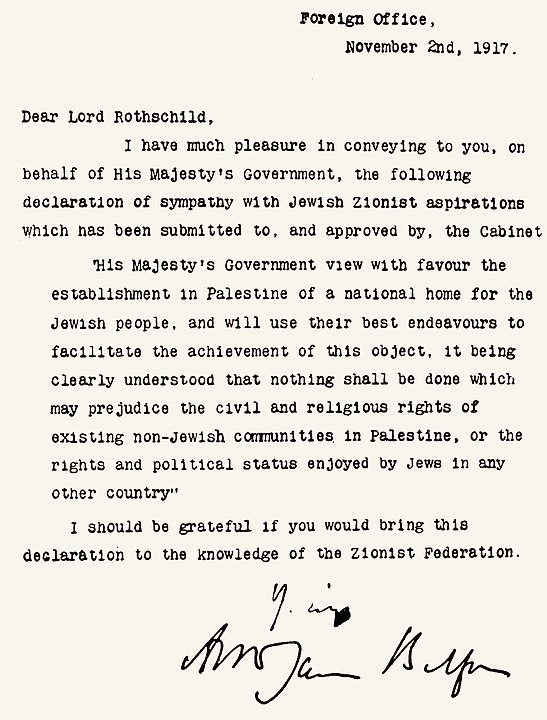
And to make this story even MORE stupidly complicated than it already is, the British had ALSO just committed to establishing, and I quote, “a national home for the Jewish people” in Palestine. That promise was enshrined in the Balfour Declaration, and it was a major win for the Zionists.
Although… maybe less of a win for anyone who is trying to keep track of this big geopolitical mess. So let’s do a super-quick recap. Ready?
- One: It’s 1916. WWI is raging. Remember, there is no Jewish state yet. And Palestine at the time was a region. Not a state.
- Two: The Ottoman Empire is dying.
- Three: EVERYONE is excited by this. Colonial powers are hungry to snatch up that resource-rich Ottoman territory. Locals are dreaming of autonomy and self-determination. The Zionist movement is working around the clock to make the Jewish state a reality.
- Four: Meanwhile, anyone who is anyone is making secret promises and agreements.
- Five: The High Commissioner of Egypt writes a series of letters to the Emir of Mecca, implying his support for an Arab state (though he’s super vague about what this entails.)
- Six: Mark Sykes and François Marie Denis Georges-Picot – and yes, I am using his full name because it makes me feel fancy even though I said I would just call him Picot – get busy carving up Ottoman territory to preserve British and French control of the Middle East.
- Seven: In Russia, the communists overthrow the Czar, kill his whole family, and spill the beans about Britain and France’s secret agreement.
- And eight: Finally, the British commit to a national home for the Jews in Palestine, while remaining vague on what exactly that means.
So just a chill, uneventful couple of years.
Sykes-Picot fallout
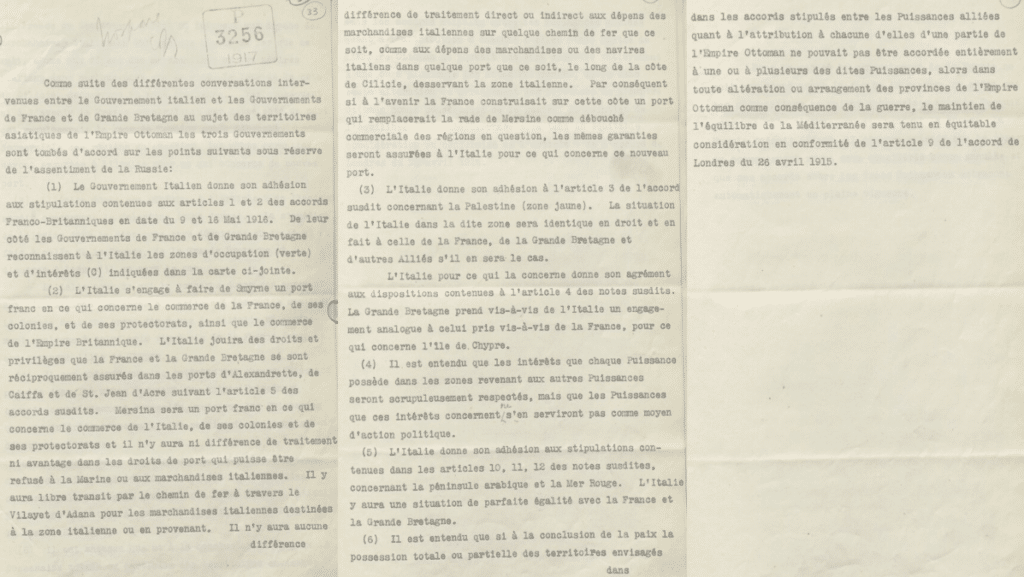
Remember at the start of this episode, when I said that dunking on Sykes-Picot is a time-honored tradition? Well, it started way as soon as the thing was published. The region’s Jews, for example, were incensed.
Historian Danny Gordis writes that for Zionists: “Given French antipathy to Zionism, joint French-British control was likely to undermine their aims. Weizmann and other Zionists much preferred the idea of a British protectorate… whereas France, they felt, “insisted upon making her colonial subjects into French citizens, erasing their national identities.” (Of course, the British-Jewish relationship cooled quickly – check out our Hebron episode for more on that.)
Not to shock you, but secret colonialist wheeling and dealing is NOT a recipe for pleasing anyone outside of Britain and France. Which I get. I’m also generally not in favor of secret deals, colonialism, and totally arbitrary borders.
But… here’s where my iconoclasm comes back. I just don’t think it was as big of a deal as these guys claim. Honestly, I think people dunk on Sykes-Picot because – as American historian Sean McMeekin puts it – it’s “shorthand.” These two words are used to sum up the argument that the Middle East is a disaster because colonial powers drew arbitrary borders without giving any thought to the folks who already lived there.
And that would be a fair argument, if that’s what actually happened.
But… it didn’t. Because the Sykes-Picot agreement was never actually implemented. Remember: Sykes and Picot were relatively minor diplomats, suggesting theoretical borders in the middle of a war. And the reality of the war quickly erased their theories.
Like… Turkey. Sykes and Picot may have carved up the Middle East like a turkey… but they didn’t didn’t bargain on the creation of an actual independent country called Turkey to mess up their plans. (What? I’m a dad. I can make dad jokes.) So… Turkish territory? Officially no longer in the cards for our grabby colonial powers. Meanwhile, though the French called dibs on Syria, it was the British who got there first. And Palestine, which was supposed to be an international zone? Well, let’s just say that after WWI, everyone in Jerusalem was drinking tea and saying “jolly good, old chap.”
But perhaps most importantly, Sykes and Picot didn’t include some major players in their post-war calculations. Like America the Beautiful, lured out of isolationism and ready to party with the other superpowers. And like the newly-formed League of Nations – the precursor to the UN, who actually had the authority – and the worlds’ backing – to decide what to do with the Middle East.
So while the spirit of Sykes-Picot lived on – you know, powerful Western nations redrawing territories at whim – it wasn’t them who reconfigured the modern Middle East. Because like I said, Sykes-Picot is overrated.
And the real treaty that gave us the Middle East as we know it today? The criminally underrated event that almost no one has ever heard of?
That happened… at San Remo.
San Remo
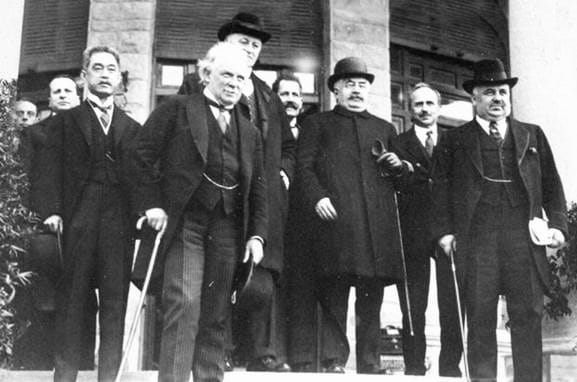
San Remo is a tiny city on the Italian Riviera. And yes, it is just as beautiful and romantic as you’re imagining. (At least, according to Google images. San Remo tourism board, call me! Speaking gigs available, I’m there.)
It was also the location for – yes, I’m saying it – the most important agreement that no one’s ever heard of.
Without Googling, do you know what the San Remo Conference is? I’m gonna bet you don’t. And that’s OK, because most people don’t. Ironically, lots of folks across the political spectrum have some strong opinions on Israel. But I rarely see San Remo come up in any meaningful discourse about the country…. even though it’s one of the most influential moments of Israeli history!
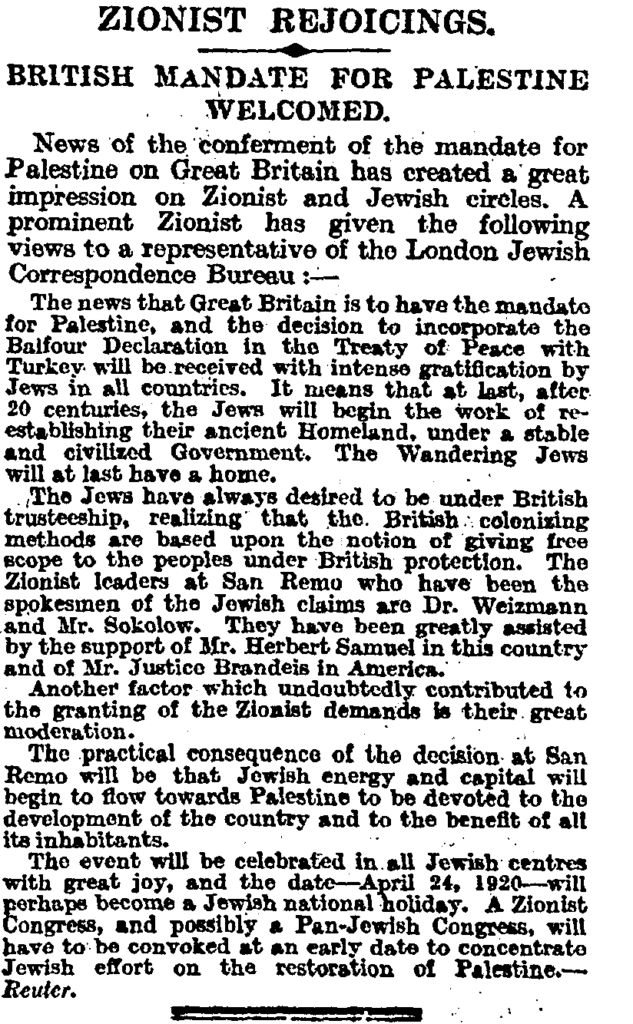
So what IS this conference?
Well, once WWI ended in 1918, the world had to figure out how to pick up the pieces. How to punish the aggressors, how to reward the victors, and what on earth to do with all the territory that once belonged to empires that no longer existed. So the world’s powers convened the Paris Peace Conference in 1919. And over the course of a year, they made some really important decisions.
Like, for example, creating the League of Nations.
Rearranging the global balance of power took time and effort. So multiple conferences and treaties were called to deal with all the different issues that WWI engendered. Among those issues was the fate of the Middle East. In April of 1920, the PMs of Britain, France, and Italy – along with representatives from Japan, Greece, and Belgium – got together on the Italian Riviera to decide what would happen to Syria, Lebanon, Iraq, Transjordan, and, of course, Palestine. Also at the conference as observers were a couple of American diplomats and… Chaim Weizmann, head of the Zionist Organization.
It’s honestly hilarious to me that it only took a week for these folks to hammer out an agreement. I mean, Israel’s been trying to get a peace deal with the Palestinians for decades. But the conference attendees had a pretty simple solution to the problem of the Middle East.
And it was… drum roll please… mandates.
Nerd corner alert: let’s take a moment to actually define the term “mandate,” because it comes up a LOT in Israeli history. If you’re anything like me, you always heard the term “mandate,” and were like, yeah, totally, but then had no idea what it actually meant.
A mandate, also called a mandatory, refers to those territories that used to belong to the Ottomans or the Germans before WWI (like, you know, Palestine or Iraq). But when Germany and the Ottomans lost the war, Allied powers took over those areas. I want to stress, though, these mandates were not colonies. Well, they weren’t supposed to be.
See, the League of Nations technically believed that self-determination was important and that people should be able to govern themselves. Or, in their very wordy words, “there should be applied the principle that the well-being and development of such peoples form a sacred trust of civilization and that securities for the performance of this trust should be embodied in this Covenant.”
The thing was, they also believed that these former Ottoman and German territories weren’t yet able to govern themselves. So, again in their terms: “The best method of giving practical effect to this principle is that the tutelage of such peoples should be entrusted to advanced nations who by reason of their resources, their experience or their geographical position can best undertake this responsibility…”
In short, the Allies’ presence had an expiration date. Once the folks in these territories proved they were able to self-govern, the Allies were out of there. So, if you’re cynically thinking, I don’t know, Noam, this plan sounds both (a) condescending and (b) kinda open to abuse, well… you’re right. Particularly in those mandates that the League of Nations considered, ah, unable to govern themselves adequately. But that didn’t apply to the mandates of the Middle East, and it’s worth noting that every single one of the Middle East mandates gained its independence by 1949.
OK. So San Remo codified the idea of mandates. Iraq and Palestine (including modern-day Jordan) went to Britain, while Syria and Lebanon went to France. Sounds suspiciously like Sykes-Picot, no?
Well. Yes and no. Because San Remo established two very important things.
- As we mentioned above, British and French control officially had an expiration date. Where Sykes-Picot basically envisioned the Middle East as one big colony, with zones of direct control and zones of indirect “influence,” whatever that means, San Remo explicitly intended for all its mandates to gain independence.
- The future Jewish state (eventually to be called Israel) was officially a go. In the words of the resolution itself: “The mandatory will be responsible for putting into effect… the establishment in Palestine of a national home for the Jewish people.”
In the words of Chaim Weizmann, president of the Zionist Organization and the first president of Israel: “This is the most momentous political event in the history of our movement and in the history of our people since our exile from our homeland.” Pause, and let that sink in.
Two years later, on July 24, 1922, the League of Nations doubled down, with every single one of the 51 member countries declaring: “…recognition has been given to the historical connection of the Jewish people with Palestine and to the grounds for reconstituting their national home in that country.”
Like Sykes-Picot, the San Remo conference gives people – well, the people who have heard of it, anyway – lots of feelings. And those feelings really depend on where you land on the political spectrum.
Take Palestinian-American journalist Ramzy Baroud, who sees San Remo as a tragedy in which Arab Palestinians’ “historic homeland was being confiscated and handed over to colonial settlers.” I’m not super clear how an indigenous people can be considered “colonial settlers,” but… that’s a different conversation and really chaval, too bad, he sees the Jews as colonial settlers. Having said that, we can hear how devastating it was to have land “confiscated” from his perspective.
On the other hand, you’ve got the folks who are generally pretty pleased with the fact that Israel exists. (Not to shock you, but I’m a proud member of that camp!) And for us, San Remo was legit. Because it enshrined into law both the creation of a Jewish homeland in Palestine and the birth of several modern Arab states. Like Iraq, Lebanon, Syria; their process of statehood is no different than that of Israel.
But San Remo’s resonance goes beyond “Zionists v. Anti-Zionists.” It’s got implications for both the Israeli right and the Israeli left.
The Israeli right, for example, generally supports the expansion of Jewish communities in Judea and Samaria, aka the West Bank. Remember, San Remo codified – and I quote – the “historical connection of the Jewish people with Palestine and… the grounds for reconstituting their national home in that country.” Using the historic definition of “national home” – i.e. the Iron Age Israelite kingdoms of Samaria to the North and Judea to the South – San Remo justifies the expansion of Jewish communities in the West Bank.
Here’s Professor Eugene Kantorovich, explaining that San Remo actually encourages settlement.
But if you’re on the opposite side of that argument, and think that Judea and Samaria should be part of an eventual Palestinian state, you can easily argue that San Remo left things pretty vague. The Israel Policy Forum, for example, points out – and I quote – “the legal instrument that established the British Mandate after San Remo refers only to a “national home,” and makes no mention of independence nor of a state. The critical omission here is no accident; it is not as if the Allies were unfamiliar with the concept of national independence or states.” They also add: “The British government ultimately conditioned the Palestine Mandate on the London-based Zionist leadership’s acceptance of the 1922 White Paper. In the White Paper, Winston Churchill clarifies that the terms of the Balfour Declaration, itself the basis for the Mandate issued at San Remo, ‘do not contemplate that Palestine as a whole should be converted into a Jewish National Home.’ In other words, in the view of the government that crafted the Mandate, ‘in Palestine’’ never meant ‘in all of Palestine.’”
So no matter how you slice it, San Remo left a lot up to interpretation. But it’s also inarguably among the most important moments of Israeli history – even though it happened 28 years before Israel’s official birth as a modern state.
Five fast facts
So that’s the story of Sykes-Picot and San Remo, and here are your five fast facts.
- Though the Ottoman Empire had been crumbling for decades, WWI was the final nail in its coffin, leaving its territory wide open.
- A LOT of folks wanted a piece of the former empire, but ignoring everyone else and their interests, English diplomat Mark Sykes and French diplomat François Marie Denis Georges-Picot (whew, that’s a mouthful) drew up a secret agreement that divided the Middle East according to their own interests.
- The secret agreement wasn’t secret for long. The newly-instated Communist government publicized it to the world, and no one was a fan. Jews and Arabs in Palestine were equally cheesed off. And modern day players – from ISIS to respected analysts to YouTube commenters – all really hate Sykes-Picot.
- But this mid-war agreement never actually came to pass. It was replaced by the San Remo Conference of April 1920, in which the world’s powers figured out what the Middle East should look like – for real this time.
- At San Remo, the League of Nations committed to the establishment of a Jewish national home in Palestine. In short, San Remo made the Balfour Declaration legally binding, paving the way for the establishment of the independent state of Israel in just a few short years.
So those are the facts, but here’s one enduring lesson as I see it.
It’s not a secret that people extrapolate different conclusions from the same set of facts. Just look at how different folks – from Ramzy Baroud to Eugene Kantorovich to the Israel Policy Forum – engage with the history of San Remo. Or, to put it another way – we each take a different story from the same set of facts. One we clutch for comfort and consult for “proof” that what we believe is right. That’s the power of story. In the words of British scholar Barbara Hardy: “We dream in narrative, daydream in narrative, remember, anticipate, hope, despair, believe, doubt, plan, revise, criticize, construct, gossip, learn, hate and love by narrative.”
So why has San Remo largely been left out of the narrative? Why has Sykes-Picot dominated instead?
Well, the cynical part of me believes that Sykes-Picot is a really convenient punching bag for people who don’t like the way the Middle East looks right now. It’s a simple story you can tell yourself to explain why there’s a war in Syria, or violence in Iraq, or instability in Lebanon, or a seemingly intractable conflict between Israelis and Palestinians.
Viewed through that lens, it doesn’t really matter if Sykes-Picot is actually to blame for the tire fire that is the Middle East. Because it’s easy – a pat etiology that helps us to make sense of why things are the way they are.
Could you use San Remo to make the same case?
Maybe. But if you have an agenda – like, say, believing that Israel shouldn’t exist – you have a much harder time using San Remo as your evidence. After all, if the agreements of San Remo aren’t valid, then neither is, say, the existence of Lebanon. Or Syria. Or Iraq.
And while those places are messy, very few people are questioning their right to exist.
But I’m not telling you about San Remo today because I want you to go out and fight with an Internet troll. If you want to, have fun wasting your time doing that, it’s a surefire way to mess with your mental health. If someone doesn’t believe Israel has a right to exist, citing San Remo isn’t going to sway them. Because as Bret Stephens puts it in a 2022 Sapir Journal article: “The battle for Israel’s good name isn’t being duked out between scrupulous pedants.”
No, I’m telling you about San Remo because it’s an integral part of the story of Israel. The rich, complicated, messy, multi-faceted narrative we tell and re-tell ourselves to try and make sense of why the world looks the way it does. And for too long, it has been left out of that narrative. So I want to bring it back to our story. Another layer in the narrative we tell ourselves to make sense of why we’re here. A legacy we must excavate to truly understand the story of our nation.
Bibliography
Background info for WWI
- https://www.washingtonpost.com/outlook/2018/11/12/what-everyone-gets-wrong-about-start-world-war-i/
- https://www.history.com/topics/middle-east/ottoman-empire
- https://www.britannica.com/topic/Black-Hand-secret-Serbian-society
- https://guides.loc.gov/chronicling-america-assassination-franz-ferdinand
On the major players
- Ottoman Empire: https://www.timemaps.com/history/middle-east-1914ad/,
- Hussein ibn Ali: https://www.britannica.com/biography/Husayn-ibn-Ali; https://www.jewishvirtuallibrary.org/the-hussein-mcmahon-correspondence-july-1915-august-1916; https://www.britannica.com/topic/Husayn-McMahon-correspondence
- Chaim Weizmann: https://www.britannica.com/biography/Chaim-Weizmann
- Sir Mark Sykes: https://www.irishtimes.com/culture/heritage/sir-mark-sykes-the-man-who-changed-the-face-of-the-middle-east-1.1958009; Christopher Simon Sykes, The man who created the Middle East : a story of empire, conflict and the Sykes-Picot agreement (Sykes’ grandson!)
Background on Sykes-Picot
- https://interactive.aljazeera.com/aje/2016/sykes-picot-100-years-middle-east-map/index.html
- https://www.history.com/this-day-in-history/britain-and-france-conclude-sykes-picot-agreement
- https://www.khanacademy.org/humanities/world-history/euro-hist/middle-east-20th-century/v/sykes-picot-agreement-and-the-balfour-declaration
- https://www.wilsoncenter.org/publication/learning-sykes-picot
- https://foreignpolicy.com/2016/05/13/sykes-picot-isnt-whats-wrong-with-the-modern-middle-east-100-years/
- Danny Gordis, Israel: A Concise History of a Nation Reborn
- Howard Sachar, A History of Israel from the Rise of Zionism to Our Time
Sound clips
- https://www.belfasttelegraph.co.uk/video-news/video-islamic-state-media-branch-releases-the-end-of-sykes-picot-30397575.html
- https://www.youtube.com/watch?v=jHOg7RPBDqc&ab_channel=RANE
- https://espresso.economist.com/1fe46a07a9ba5f05129cab882582d907
- https://www.youtube.com/watch?v=JeIXu7yw6J8&ab_channel=UKLFICharitableTrust
San Remo
- Meeting minutes: https://www.jewishvirtuallibrary.org/jsource/History/Minutes_of_the_1920_Conference_of_San_Remo.pdf
- Background: https://israelforever.org/interact/blog/why_you_should_know_san_remo/
- International law: https://besacenter.org/wp-content/uploads/2020/04/172-MONOGRAPH-San-Remo-Conference-Karsh-FINAL.pdf
- Mandate for Palestine, 7/24/22: https://www.mfa.gov.il/mfa/foreignpolicy/peace/guide/pages/the%20mandate%20for%20palestine.aspx#:~:text=No%20discrimination%20of%20any%20kind,ground%20of%20his%20religious%20belief.
- Anti-Zionist narrative on San Remo: https://www.arabnews.com/node/1669396
- Right-wing narrative on San Remo: https://israelforever.org/interact/blog/why_you_should_know_san_remo/
- Israel Policy Forum on San Remo: https://israelpolicyforum.org/2020/04/27/unpacking-san-remo-the-centerpeice-of-israels-annexation-narrative/